Nikon -
D7500
January 2020 to
present.
I sold my Nikon D5200 Body and Huawei P20 Pro to raise cash to buy this camera. Kameraz in Rosebank Mall was having a special of 15% discount on the camera.













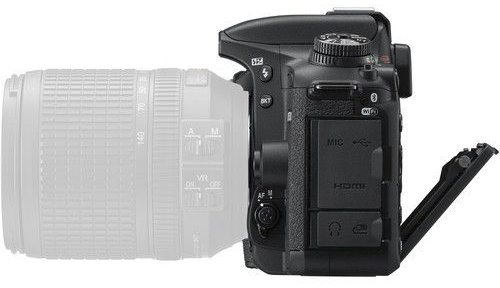

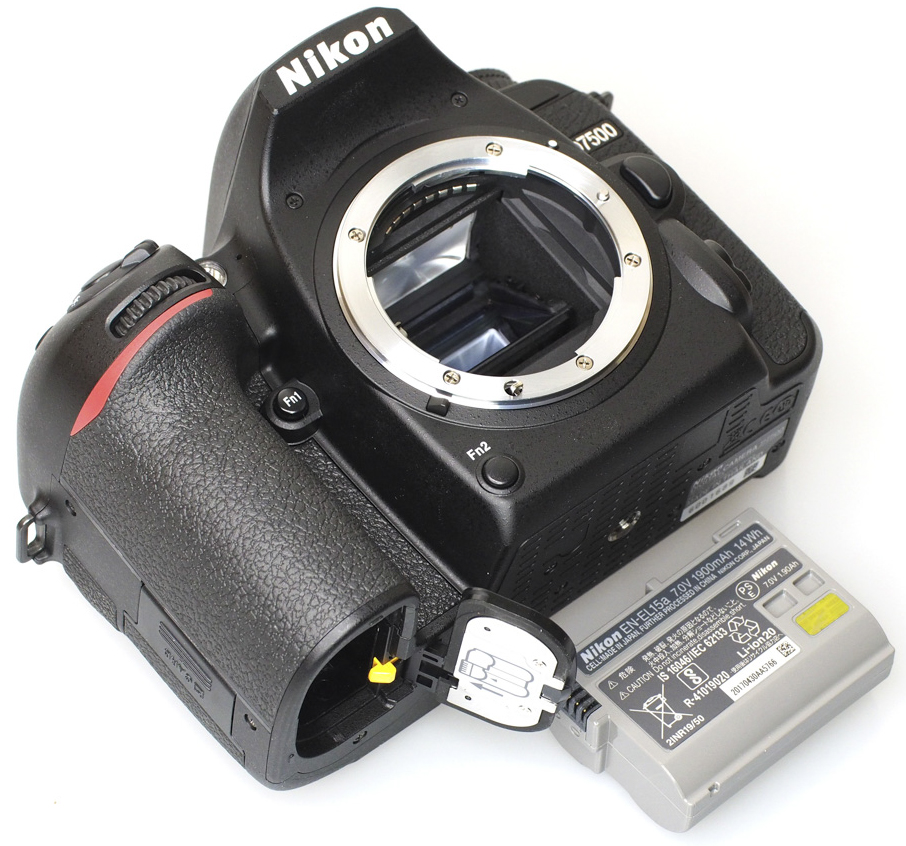
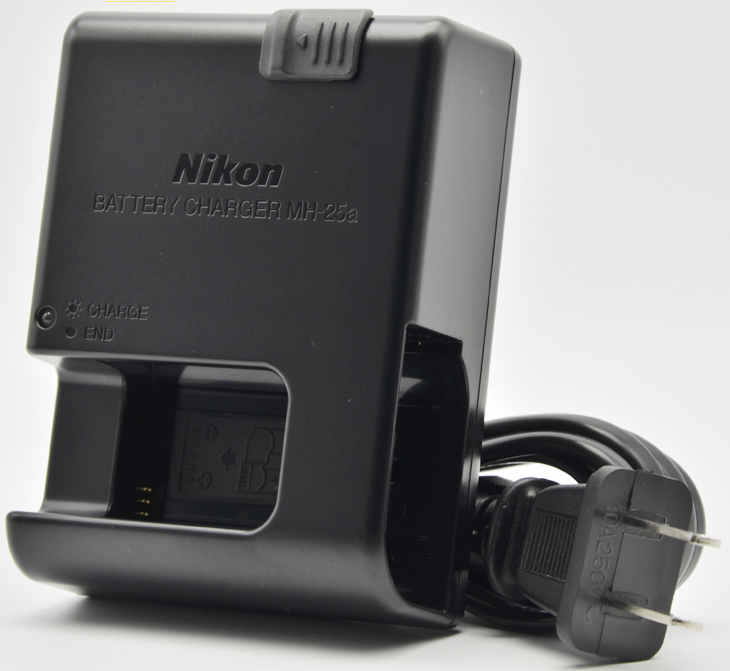

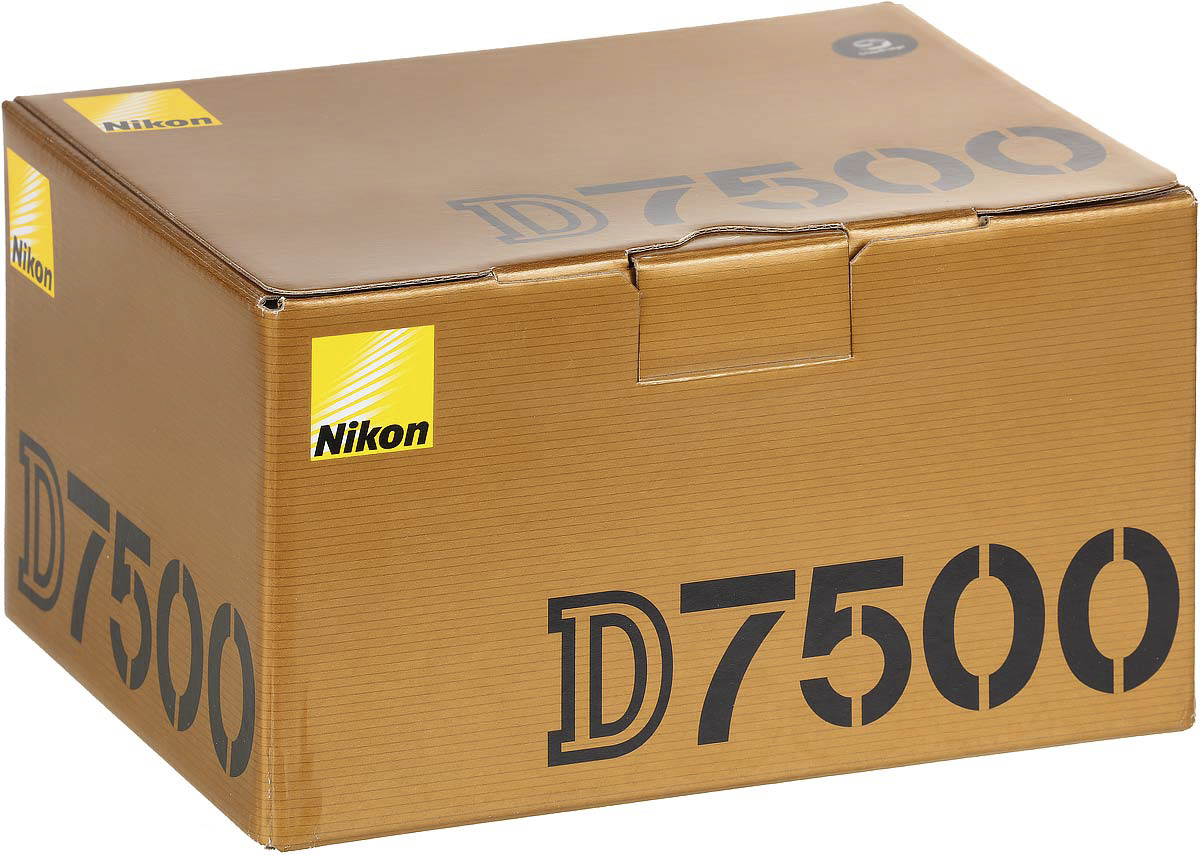








Manufacturers
Description:
-
This new Nikon D7500 is a fantastic combination of the ultra high-speed
imaging guts of the D500 put in the more practical body of the previous
D7200.
- The Nikon D7500 has the image sensor,
light meter and processor of the top-of-the-line DX Nikon D500 and
keeps the D7200's body, mode dial and AF system, and adds Bluetooth, 4K
video and a flipping touch LCD to it.
- Image Stabilization: This is the first
time Nikon introduce in-body image stabilization inside a DSLR. It is
an electronic Image Stabilization system only available for Full HD
video mode.
- The camera doesn’t have low pass filter inside it and delivers astounding images without an issue.
- The D7500 is relatively quiet for a DSLR, and much quieter than any of the pro DSLRs like the D5.
- The D7500 comes with Nikon’s SnapBridge
wireless picture transfer and remote control system. This uses a
Bluetooth LE always-on connection to automatically transfer 2MP
versions of your photos to your smart device, via Nikon’s free
SnapBridge app. The idea is that this Bluetooth connection can also
activate the Wi-Fi connection when required for remote camera control
and full-size image transfer.
- The camera body is weather-sealed and
features a new carbon-fibre reinforced monocoque structure (rather than
magnesium). The camera uses the same battery as the Nikon D7200 and
other Nikon cameras, the EN-EL15, and the camera will give up to 960
shots.
- D7500’s autofocus capabilities are
essentially the same as what you’ll find in the D7200, both of them are
Nikon’s newest Multi-CAM 3500DX II system. However, the D7500 does add
Group AF mode, which some photographers will find useful for tracking
fast-moving and difficult subjects, such as birds in flight.
- The D7500 has best-in-class image quality
for a crop-sensor camera. In low light conditions, where you’ll be
using a high ISO setting, it manages to retain very high levels of
detail. Up to ISO 3200, which makes this a viable option even for Milky
Way and night sky photography – historically the domain of full frame
cameras, with few exceptions.
- The D7500 has a RGB LCD matrix, The screen pixels consist of 3 sub-pixels.
- The D7500 has an eye sensor above the viewfinder that automatically
turns off the display on the LCD monitor when your face moves close to
the viewfinder and turns it on again when your face moves away.
- Electronic Stabilization : 3-axis built-in e-VR image stabilization
when shooting 1080p Full HD video only (Electronic stabilization not
supported in 4k).
Designed as a true all-arounder, the Nikon
D7500 is a DX-format DSLR offering a versatile feature-set to appeal to
photographers and videographers alike. Based on a 20.9MP CMOS sensor
and EXPEED 5 image processor, this multimedia maven avails an 8 fps
continuous shooting rate for up to 100 consecutive JPEGS, a native
sensitivity range to ISO 51,200 that can be expanded up to ISO
1,640,000, and 4K UHD video and time-lapse recording capabilities.
Complementing the imaging capabilities is a 51-point Multi-CAM 3500FX
II autofocus system, which features 15 cross-type points for fast
performance and accurate subject tracking capabilities in a variety of
lighting conditions.
Balancing the performance attributes, the
D7500 is also characterized by its sleek profile and monocoque
construction that is comfortable and easy to handle. This physical
design is also fully weather-sealed to permit working in harsh
environmental conditions. In addition to the pentaprism optical
viewfinder, a rear 3.2" 922k-dot touchscreen is also featured, and has
a tilting design to benefit working from high and low shooting angles.
Additionally, SnapBridge Bluetooth and Wi-Fi permit wireless
transferring of photos and movies and remote control over the camera
from linked mobile devices.
20.9MP DX-Format CMOS Sensor and EXPEED 5 Image Processor
The DX-format 20.9MP CMOS sensor is paired
with the EXPEED 5 image processor to provide an esteemed mixture of
high sensitivity, nuanced image quality, and fast overall performance.
At native values, a sensitivity range from ISO 100-51200 permits
working in a broad array of lighting conditions, and can be further
expanded to ISO 50-1640000 (Lo 1 to Hi 5) to handle the most
challenging of situations. The mixture of resolution and sensor size
also contributes to clean image quality and smooth color transitions
with reduced noise throughout the sensitivity range.
In addition to benefitting image quality,
the EXPEED 5 processor also affords a wealth of speed throughout the
camera system, including a top continuous shooting rate of 10 fps with
full-time autofocus and exposure metering. Up to 100 JPEGs or 50 14-bit
lossless compressed NEF files can be recorded in a single burst.
4K UHD Video Recording
Capable of recording more than just stills,
the D7500 supports 4K UHD video recording at 30, 25, and 24 fps frame
rates and Full HD/HD recording at up to 60 fps, along with the ability
to save movie files to the in-camera memory cards or as an uncompressed
file to an optional external recorder via HDMI out. For maintained
quality and versatility in how your movies look, three image area
options are available:
- 4K UHD movie image format is an area that
provides a 1.5x increase in the effective focal length of the lens in
use and is reserved for 4K 3840 x 2160 recording.
- 1.3x-based movie image area provides a 1.3x crop of the DX sensor, and is used for recording Full HD and HD video.
- DX-based movie image format utilizes the
full width of the DX-format sensor, and is used to record Full HD 1920
x 1080 and HD 1280 x 720 video. This setting is well-suited for shallow
depth of field effects and provides the widest field of view.
As with still shooting, the wide range of
sensitivities is available for recording in low- and bright-light
conditions, ranging from expanded ISO 100-1640000, and sensitivity
values are manually adjustable via the dedicated movie-shooting menu.
Also, a video-optimized Flat Picture Control mode can be used during
recording to flatten the overall contrast curve for more control during
post-production and color grading.
Benefitting handheld shooting, an
Electronic Vibration Reduction feature can be used during Full HD and
HD recording, which minimizes the appearance of camera shake across
three axes to control horizontal, vertical, and rotational movements.
Additionally, Active D-Lighting can also be employed during Full HD/HD
shooting to preserve highlight and shadow detail when working in
high-contrast situations.
In regard to handling, a dedicated power
aperture button (Pv) makes it possible to achieve smooth, continuous
exposure transitions when switching from light to dark areas and Auto
ISO can also be used to maintain consistent brightness when working in
changing light situations. Audio recording can be handled using the
built-in stereo microphone or an optional external mic can be added via
the 3.5mm stereo jack for greater control over quality. Regardless if
using the in-camera mic or an external mic, audio levels can be
adjusted in 20 increments and live monitoring is possible via the
headphone jack.
In addition to straight movie recording,
time-lapse recording, for up to 9999 consecutive frames shot over the
course of up to one week, is also possible with up to 4K UHD/30p output
from the camera.
51-Point Multi-CAM 3500FX II Autofocus System
Supporting the imaging capabilities of the
D7500 is an apt autofocus system that employs up to 51 distinct points,
with options available to use 9, 21, or all 51 points depending on the
situation, with AF detection sensitivity down to -3 EV. 15 cross-type
points are also integrated within this array to provide even greater
accuracy to centrally-located subjects. Benefitting the use of
telephoto lenses and teleconverters, the center-most point is also
sensitive down to an aperture value of f/8. 3D Tracking, a part of the
intelligent Scene Recognition System, also works to benefit maintained
focusing on moving subjects for greater accuracy when shooting at high
continuous shooting speeds. Furthermore, Single-point AF, Dynamic-area
AF (with 9, 21, or 51 points selectable), 3D-tracking (using all 51
points), and Auto-area AF modes are also available, as well as
Group-Area AF that treats smaller groups of AF points as a single point
for a wider field of recognition, and is well-suited to tracking faces
or other detailed subjects.
When working in live view, for either still
or movie shooting, a contrast-based AF system is employed to acquire
focus precisely and can function in continuous, full-time servo mode to
better-suit working with moving subjects.
Body Design
- A large 3.2" 922k-dot touchscreen is
available for intuitive live view shooting and playback control, and it
features a tilting design to benefit working from high and low shooting
angles.
- A bright pentaprism optical viewfinder
offers 100 percent frame coverage and a 0.94x magnification for clear,
realistic viewing in any lighting condition.
- The monocoque-type carbon-fiber
construction is lightweight, durable, and incorporates a deep right
hand grip for comfortable and stable handling, making it especially
suitable for all-day shooting with longer zooms or telephoto lenses.
- Weather-sealed design benefits working in trying environmental conditions.
- Shutter unit has been tested for up to
150,000 cycles for long-lasting use and an integrated shutter monitor
automatically calculates the duration between front and rear curtain
movements with each exposure to automatically correct for any variances.
- Built-in pop-up flash is available for
additional illumination when working in low-light conditions. A hot
shoe can also be used in conjunction with an optional external
Speedlight, and, if used with the optional WR-R10 Wireless Remote
Controller, the camera can control up to three groups of SB-5000
Speedlights via radio.
- The included EN-EL15a rechargeable lithium-ion battery is CIPA-rated to last for approximately 950 shots per charge.
SnapBridge Bluetooth and Wi-Fi
Supporting a wealth of sharing and tagging
possibilities, the D7500 features built-in SnapBridge connectivity to
enable seamless transfer of imagery as well as remote shooting
capabilities. BLE (Bluetooth Low Energy) and Wi-Fi enables
communication between the camera and a smart device. Additionally, the
mobile device can remotely trigger the shutter and display a live view
image from the camera to enable working from a distance.
Scene Recognition System and Exposure Metering
The intelligent Scene Recognition System
with 3D Color Matrix Metering III utilizes a 180k-pixel RGB sensor to
evaluate and analyze all aspects within a scene, including brightness,
contrast, subject distance, and the scene colors, to quickly determine
an accurate exposure and white balance setting to best render the scene
at hand. The information gathered is also checked against onboard
reference images to ensure consistency from image to image in regard to
exposure, white balance, i-TTL flash settings, and subject-tracking AF
performance.
SanDisk Extreme Pro MicroSDXC UHS-I U3,V30,A2 64Gb

JJC HS-PRO1M Camera Hand Strap - January 2020
Designed for most DSLR cameras with 1/4"-20 tripod socket.
Threads the strap through camera lug at the other end.
Provides extra security to help prevent accidental slipping out of your hand.
Effectively relieves the hand fatigue.
Adjustable strap provides perfect fit for any hand size.
Padded hand cushion with air holes makes the strap comfortable, breathable and supportive during use.
HS-PRO1M has a metal base plate with an eyelet for connecting quick
release strap, as well as the plate being PU60 Arca-Swiss Style Quick
Release compatable.




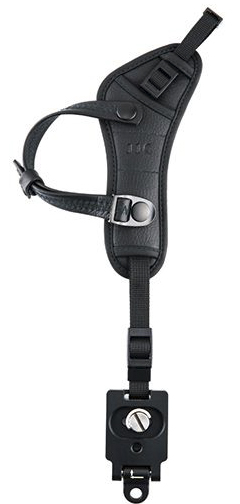
BOYA BY-MM1 Mini Shotgun mic - July 2020
The BOYA BY-MM1 is a cardioid microphone,
which specially design to improve the sound quality of videos on the
basis of build-in microphones.
With both TRS cable and TRRS output cable
included, it can be used on Smartphones, cameras, camcorders, audio
recorders, PCs, and other audio/video recording devices.
BY-MM1 comes out in compact size and light weight aluminium constructure , it will not be a heavy burden while shooting.
Included inside with an anti-shock mount, which can effectively reduce unwanted vibration, cable and handling noise.
Also included a furry windproof shield,
which specially used for minimizing the wind and environmental noise
for outdoor recording, make sure the sound crystal clear.
Specifications:
Transducer: Electret Condenser
Polar pattern: Cardioid
Frequency Response: 35-18KHz +/-3dB
Sensitivity: -42dB +/- 1dB / 0dB=1V/Pa, 1kHz
Signal to Noise Ratio: 76dB SPL
Plug: 3.5mm TRS and TRRS connector
Dimensions: Φ22*81mm
Net Weight: 86g/0.19 lb





I did not like the stock microphone mount,
it held the Mic a bit to high up and made the mic stand out a bit too
much. I made my own generic mic holder that is a bit lower profile




October 2020
Tokina AT-X 150-500mm f5.6 SD Zoom Lens |
| Model product number | AT-X 150 |
| Released | 1980 |
| Format | FX |
| Focal length FX {DX} | 150-500mm {225-750mm} (3.3x zoom) |
| Max / Min Aperture | f5.6 at all focal lenths - f32 |
| Max / Min angle of view FX {DX} | 24° / 8°
|
| Lens Construction | 15 elements in 13 groups.
Single-coated.
Some SD (same as ED or UD) glass. |
| Minimum focus range | 3.1m (10.2ft) throughout the zoom range |
| No. of Diaphragn blades | 7 blade diaphragm |
| Filter size / Hood | 95mm front thread and 35.5mm rear drop-in. Built in Collapsable hood |
| Diameter x lenth | 104.11 x 314mm |
| Weight | 2,240g (79oz/4 pounds) |
| Vibration Compensation | None |
| Focus | Manual only |
Case
|
Leather case with felt lined box
|
Tokina AT-X 150-500mm f/5.6 SD. SD stands for super-low dispersion glass, similar to Nikon's ED glass and Canon's UD glass.
The ATX designated lenses are the "pro" tokina lenses












Tokina Lens shooting parameters :
Shoot around 1/500 shutter, with ISO 3200
Clean the images in Topaz Denoise AI :
Remove noise : 33
Enhance Sharpnass : 64
Recover Origina Detai : 4
Color noise Reduction : 0
Export to TIF
Open files in Photoshop and run Action : Sharpen-Topax-Denoise-file
Smart Sharpen
Amount : 248%
Radius : 4.3
Reduce Noise : 9
January 2021
Nikon TC-17E II 1.7x Teleconverter |
| Model product number | 2151 (TC-17E II)
|
| Released | 2004
|
| Format | FX or DX
|
| Focal length FX {DX} | 1.7 focal lenth multiplier |
| Max / Min Aperture | N/A |
| Max / Min angle of view FX {DX} | N/A
|
| Lens Construction | 7 elements in 4 groups.
Multi coated.
|
| Minimum focus range | N/A
|
| No. of Diaphragn blades | N/A
|
| Filter size / Hood | Caps :
Special extended BF-3A front cap, since the front pokes out. It is a
light gray cap to differentiate it from a conventional body cap. Rear
Cap is a Standard LF-1.
|
| Diameter x lenth | 2.6" (66 mm) around by 1.2" (32 mm) long.
|
| Weight | 250g (9oz) |
| Vibration Compensation | None |
| Focus | Retains AF and VR with compatable lenses (Electrical Contact Passthrough)
|
Pouch
|
CL-0715 Soft case |
The Nikon TC-17E is a 1.7x teleconverter. You lose 1.5 stops of light and get 70% more (1.7x) the focal length.
So with my crop sensor Nikon D7500, and the teleconverter, I get the
following focal lenths with my compatable lenses (after removing the
compatability tab on the teleconverter) :
Nikon AF-S VR Zoom-Nikkor 70-300mm f/4.5-5.6G IF-ED : 300mm > 450mm with APSC 1.5x crop > 765mm with 1.7x Teleconverter
Tokina AT-X 150-500mm f5.6 SD Zoom Lens :
500mm > 750mm with APSC 1.5x crop > 1275mm with 1.7x Teleconverter
The teleconverter only works with the more exotic AF-I and AF-S
telephoto lenses that have a cutout on the lens to accept the extra
tab. You cannot mount any other lenses on it unless you grind off the
extra tab on the teleconverters female mount.
This converts the female mount into a standard Nikon F-mount. Only
lenses that will not have the rear lens element hit the teleconverter
front element should then be mounted.
Wide and medium focal lenth lenses will hit the teleconverter front
element. Zooms tend to have their rear element more recessed inside the
lens and are less likely to hit the teleconverter front element.
This is why Nikon added the extra tab to prevent non compatable lenses
from being fitted. By grinding off the tab, the responsibility is now
up to me!
My Nikon D7500 can autofocus up to f8, so in good light, I can use my Nikon AF-S VR Zoom-Nikkor 70-300mm f/4.5-5.6G IF-ED with autofocus with the 1.7x teleconverter. My Tokina is manual only.





On
the image on the left the extra tab is removed so it will fit any F
mount lens, as long as the TC and lens elements do not foul each other.
The TC on the right stil has the limiting tab.



Nikon CL-0715 Soft Lens Case

January 2021
Nikon Zoom-Nikkor 35-105mm f/3.5~4.5 MACRO AI-S
|
| Model product number | Nikon Zoom-Nikkor 35-105mm f/3.5~4.5 MACRO AI-S |
| Released | 1983 |
| Format | FX |
| Focal length FX {DX} | 35-105mm {52-157mm} (3x zoom) |
| Max / Min Aperture | f3.5 - f22 |
| Max / Min angle of view FX {DX} | 62° / 23°20'
|
| Lens Construction | 16 elements in 12 groups. |
| Minimum focus range | 1.4m throughout the zoom range. Macro : 27cm (1:4 life size reproduction ratio)
|
| No. of Diaphragn blades | 7 blade diaphragm |
| Filter size / Hood | 52mm front thread. JJC Collapsible Rubber Lens Hood 52mm (LS-52S) |
| Diameter x lenth | 64mm dia x 86.5mm long (95mm extension from flange)
|
| Weight | 510g |
| Vibration Compensation | None |
| Focus | Manual only |
Case
|
none
|
Introduced in January, 1983.
Nikon
Zoom-NIKKOR 35-105mm 1: 3.5-4.5 is a high quality 3x zoom universal
lens for Nikon film cameras. At the time it was a very popular
model, released at the same time as the Nion F3 camera. It has a
range of focal lengths shifted towards the tele-range.
There
are a few interesting features relates to this compact Nikkor zoom
lense. First, it adopts a pull and slide zoom design; next, the zoom
range covers a very good focal length from 35mm wideangle to medium
telephoto range at 105mm.It was also the first Ai-Spec production
Nikkor zoom lense that used a variable lens speed (35 mm at f/3.5 to
f/4.5 at the other end of 105mm). Other technical highlights include
are: the lense has a native Ai-S lens coupling system but still offers
a meter coupling prong in order older non-Ai Nikon bodies be still able
to be used at stopped down metering mode. At the 35 mm setting, a
macrofocus feature is provided which permits the lense to be focused
down to 10.6 in. (0.27m). At this setting, 1:4 life size reproduction
ratio can be achieved. The lense has quite a colourful appearance as a
orange colored macrofocus stripe was engraved on the distance scales.
The basic design philosophy of this lense paths the way for many other
Nikkor zoom lenses that followed at later years replicating in a
similar fashion.






My lens came without a lens hood, nor front and rear lens cap. I bought a JJC generic 52mm hood and front and rear caps.
JJC LS-52S 52mm 3-in1 Collapsible Silicone Lens Hood




The hood screws onto the front thread of the lens, and it has its own front thread to allow a 52mm lens cap to be attached.
JJC Generic 52mm Lens cap
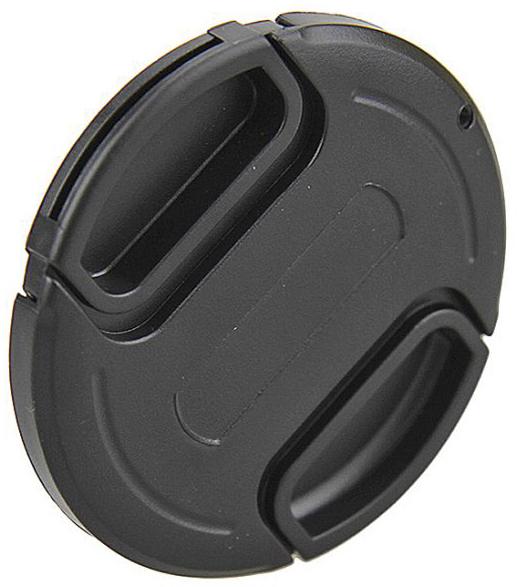
JJC generic Rear lens cap

March 2021
Nikon AF-S DX NIKKOR 50mm f/1.8G (Prime) |
| Model product number | 2199 |
| Released | June 2011 |
| Format | FX/35mm |
| Focal length FX {DX} | 50mm {75mm} |
| Max / Min Aperture | f1.8(W)-f16(W) |
| Max / Min angle of view FX {DX} | 47° {31.5°} |
| Lens Construction | 7 Elements in 6 Groups, with one aspherical lens (AS), Super Integrated Coating (SIC)
|
| Minimum focus range | 0.45m (1.5ft) |
| No. of Diaphragn blades | 7 blade rounded diaphragm |
| Filter size / Hood | 58mm / Round reversible bayonet hood HB-47 (I did not get the hood with my lens, so I bought a JJC LS-58S 58mm 3-in1 Collapsible Silicone Lens Hood)
|
| Diameter x lenth | 72 x 52.5mm |
| Weight | 185g (6.5oz) |
| Vibration Compensation | none |
| Focus | M/A and M, Internal Focus, AF-S (Silent Wave Motor) |
Pouch
| - |

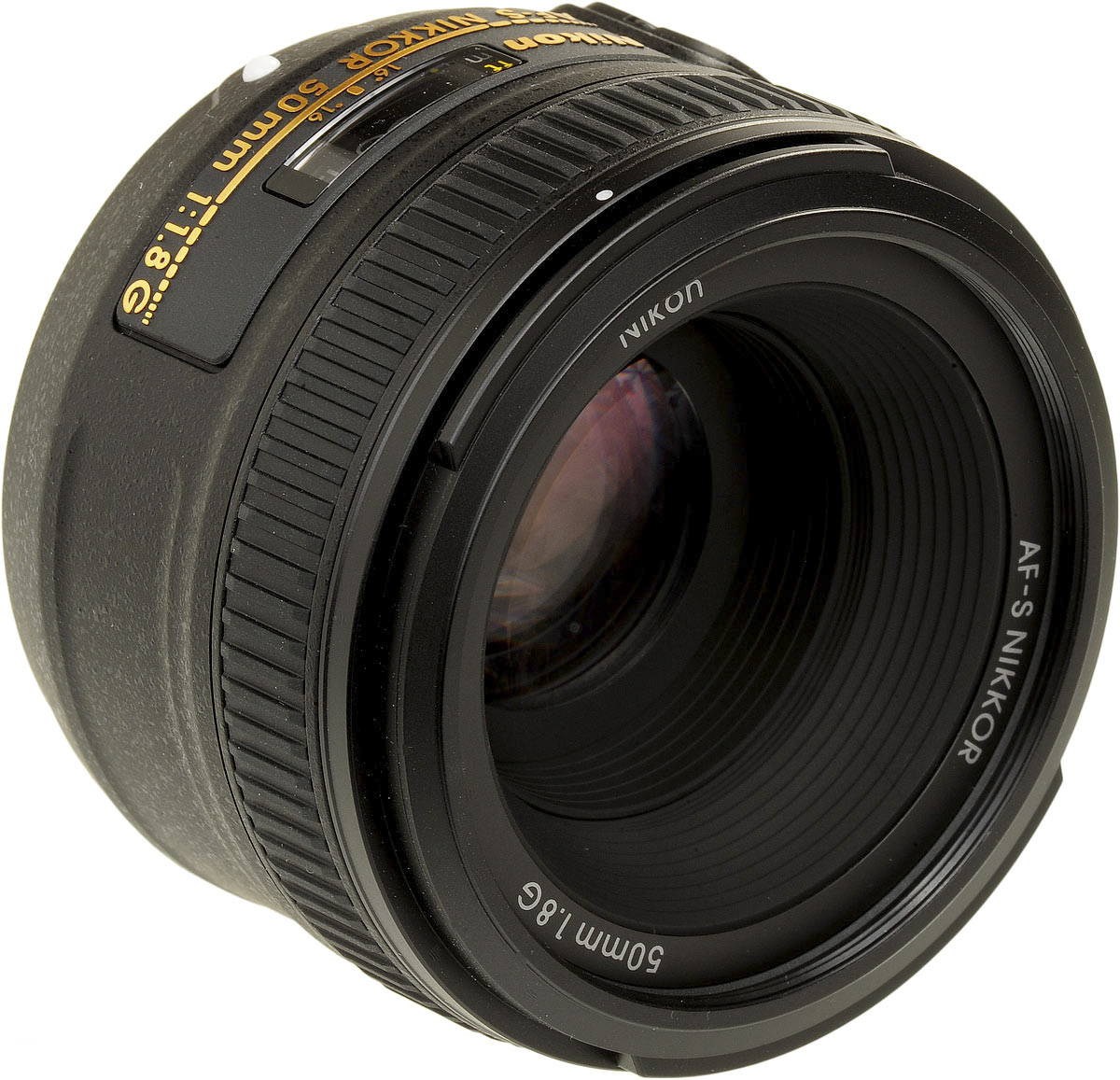



My lens came without a lens hood, so I bought a JJC generic 58mm collapsible lens hood.
JJC LS-58S 58mm 3-in1 Collapsible Silicone Lens Hood




June 2021
|
Tamron 18-270mm
F3.5-6.3 Di-II VC PZD B008 (Superzoom)
|
| Model product number |
B008 |
| Released |
December 2010 |
| Format |
DX |
| Focal length FX {DX} |
27-405mm {18-270mm} (15x zoom) |
| Max / Min
Aperture |
f3.5(W)-f6.3(T)
/ f/22(W)-f40(T) |
| Max / Min angle of view FX {DX} |
{75°33' /
5°55'} |
| Lens Construction
|
16 Elements in 13
Groups, 2 LD Glass elements, 3 aspherical elements |
| Minimum focus
range |
0.49m (19.3in) throughout the zoom range |
| No. of Diaphragn blades |
7 blade rounded diaphragm |
| Filter size / Hood |
62mm / Flower shaped non-reversible
bayonet hood |
| Diameter x lenth |
74 x 88mm |
| Weight |
450g (15.9oz) |
| Vibration
Compensation |
VC (Vibration Compensation)
|
| Focus |
AF and MF, Internal Focus, Piezo Drive ultrasonic
motor (PZD) |
This lens was the first to use a PZD focusing motor.
At the time of the introduction of Tamron 18-270 / 3.5-6.3, the VC PZD
was the lightest and most compact super-hyper-mega-zoom with a similar
set of focal lengths.



Marumi 62mm "UV HAZE" UV Filter

Nikon D7500 Firmware:
- Shipped with versions : (Firmware : Ver 1.10 / Distortion Control : 2.017)
- Updated to versions : (Firmware : Ver 1.10 / Distortion Control : 2.018)
Nikon D7500 Year of introduction : June 2017
| Body type |
| Body type |
Mid-size SLR |
|
| Sensor |
| Max resolution |
5568 x 3712 |
|
| Other resolutions |
4176 x 2784, 2784 x 1856 |
|
| Image ratio w:h |
3:2 |
|
| Effective pixels |
20.9 megapixels |
|
| Sensor photo detectors |
21.5 megapixels |
|
| Sensor size |
APS-C (23.5 x 15.6 mm), RGB Filter with no Anti-Alias Filter |
|
| Sensor type |
CMOS |
|
| Processor |
Expeed 5 |
|
Power On to first shot
|
0.2 sec
|
|
| Image |
| ISO |
Auto, 100 - 51200 native (50 - 1640000 expanded) |
|
| White balance presets |
12 |
|
| Custom white balance |
Yes (5) |
|
| Image stabilization |
Digital only for Full HD video and Below
|
|
| Uncompressed format |
RAW, 12 or 14 bit Lossless compressed or compressed NEF
|
|
| JPEG quality levels |
Fine, Normal, Basic |
|
| Optics & Focus |
| Autofocus |
- Contrast Detect (sensor)
- Phase Detect with Multi-CAM 3500 FX II 51 point AF System
- Multi-area
- Selective single-point
- Tracking
- Single
- Continuous
- Face Detection
- Live View
- AF Assist: Yes (white lamp)
|
|
| Digital zoom |
No |
|
| Manual focus |
Yes |
|
| Number of focus points |
51
|
|
| Lens mount |
Nikon F mount |
|
| Focal length multiplier |
1.5× |
|
| Screen / viewfinder |
| Articulated LCD |
Tilting Forward and Backward |
|
| Screen size |
3.2" |
|
| Screen dots |
922,000 |
|
| Touch screen |
Yes
|
|
| Screen type |
TFT LCD touchscreen monitor |
|
| Live view |
Yes (With
contrast-detect AF, face detection and subject tracking) |
|
| Viewfinder type |
Optical
(pentaprism)
|
|
| Viewfinder coverage |
100% |
|
| Viewfinder magnification |
0.94× |
|
| Photography features |
| Shutter Type |
Electronically controlled vertical-travel focal-plane
mechanical shutter. Electronic front-curtain shutter available in mirror up release
mode.
|
|
| Shutter speed |
1/8000 - 30sec, Bulb
|
|
| Aperture priority |
Yes |
|
| Shutter priority |
Yes |
|
| Manual exposure mode |
Yes |
|
| Subject / scene modes |
Yes |
|
| Built-in flash |
Yes (Pop-up), Guide no. 12 meters @ ISO100
|
|
| Flash range |
12 m (at ISO 100) |
|
| External flash |
Yes (Hot-shoe) |
|
| Flash modes |
Auto, On, Off, Red-eye, Slow sync, Rear curtain |
|
| Flash Sync Speed |
1/250 sec |
|
| Continuous drive |
Yes (1 - 7 fps (slow) and 8fps (fast)) |
|
| Self-timer |
Yes (2, 5,
10 or 20 sec) |
|
| Metering modes |
- Multi
- Center-weighted
- Spot
- Highlight-weighted
|
|
| Exposure compensation |
±5 (at 1/3 EV, 1/2 EV steps) |
|
| AE Bracketing |
±2 (2, 3, 5, 7 frames at 1/3 EV, 1/2 EV steps, 2/3 EV steps, 1 EV steps, 2 EV steps) |
|
| WB Bracketing |
Yes (3
frames in 1-stop increments) |
|
| Active D-Lighting |
Auto, extra high, high, normal, low, off (JPEG mode only)
|
|
ADL bracketing
|
2 shots (JPEG mode only) |
|
| Videography features |
| Format |
|
|
| Microphone |
Stereo |
|
| Speaker |
Mono |
|
| Resolutions |
3840 x 2160 @ 30p @ 125 Mbps, MOV, H.264, Linear PCM
3840 x 2160 @ 25p @ 125 Mbps, MOV, H.264, Linear PCM
3840 x 2160 @ 24p @ 125 Mbps, MOV, H.264, Linear PCM
1920 x 1080 @ 60p @ 48 Mbps, MOV, H.264, Linear PCM
1920 x 1080 @ 50p @ 48 Mbps, MOV, H.264, Linear PCM
1920 x 1080 @ 30p @ 24 Mbps, MOV, H.264, Linear PCM
1920 x 1080 @ 25p @ 24 Mbps, MOV, H.264, Linear PCM
1920 x 1080 @ 24p @ 24 Mbps, MOV, H.264, Linear PCM
1280 x 720 @ 60p @ 24 Mbps, MOV, H.264, Linear PCM
1280 x 720 @ 50p @ 24 Mbps, MOV, H.264, Linear PCM
Video Formats : MOV (Video: H.264, Audio: Linear PCM) and MP4 (Video: H.264, Audio: AAC)
|
|
| Videography notes |
Supports MOV and MP4 packages
1080p is shot across the entire sensor.
4k is shot at a 1.5x crop of the middle of the sensor, so a 35mm lens will be the equivalent of a 50mm lens (35mm x 1.5x).
Electronic Stabilization is available at 1080p, not available at 4k or for Stills Images.
3-axis built-in e-VR image stabilization when shooting 1080p Full HD video only.
Zebra stripes in live-view.
|
|
| Storage |
| Storage types |
SD/SDHC/SDXC |
|
| Storage used |
Sandisk Extreme Pro
1120x Micro SDXC UHS-I 64Gb |
|
| Connectivity |
| USB |
USB 2.0 (480
Mbit/sec) (Micro USB)
|
|
| HDMI |
Yes (Mini-HDMI) |
|
| Wireless |
Built-In Wi-Fi 802.11b,g (2.4Ghz) with low energy Bluetooth 4.1
|
|
| Remote control |
Yes (Wired (MC-DC2 port), Wireless, Smartphone (SnapBridge application), Infra Red
|
|
| Physical |
| Environmentally sealed |
Yes
|
|
| Battery |
Battery Pack EN-EL15b |
|
| Battery description |
1900mAh, 7.0V, Lithium-Ion EN-EL15b rechargeable battery &
MH-25a charger |
|
| Weight (inc. batteries) |
720 g (1.59 lb / 25.40 oz) |
|
| Dimensions |
136 x 104 x 73 mm (5.35 x 4.09 x 2.87) |
|
| Other features |
| Orientation sensor |
Yes
|
|
| Timelapse recording |
Yes (4k output)
|
|
| GPS |
Optional |
|
| GPS notes |
GP-1A, or Via Smartphone GPS using SnapBridge App
|
| Sensor Cleaning |
Ultrasonic vibration of sensor to shake dust loose |
|



















PREVIOUS NEXT
MENU
HOME






















































































![]()







![]()




